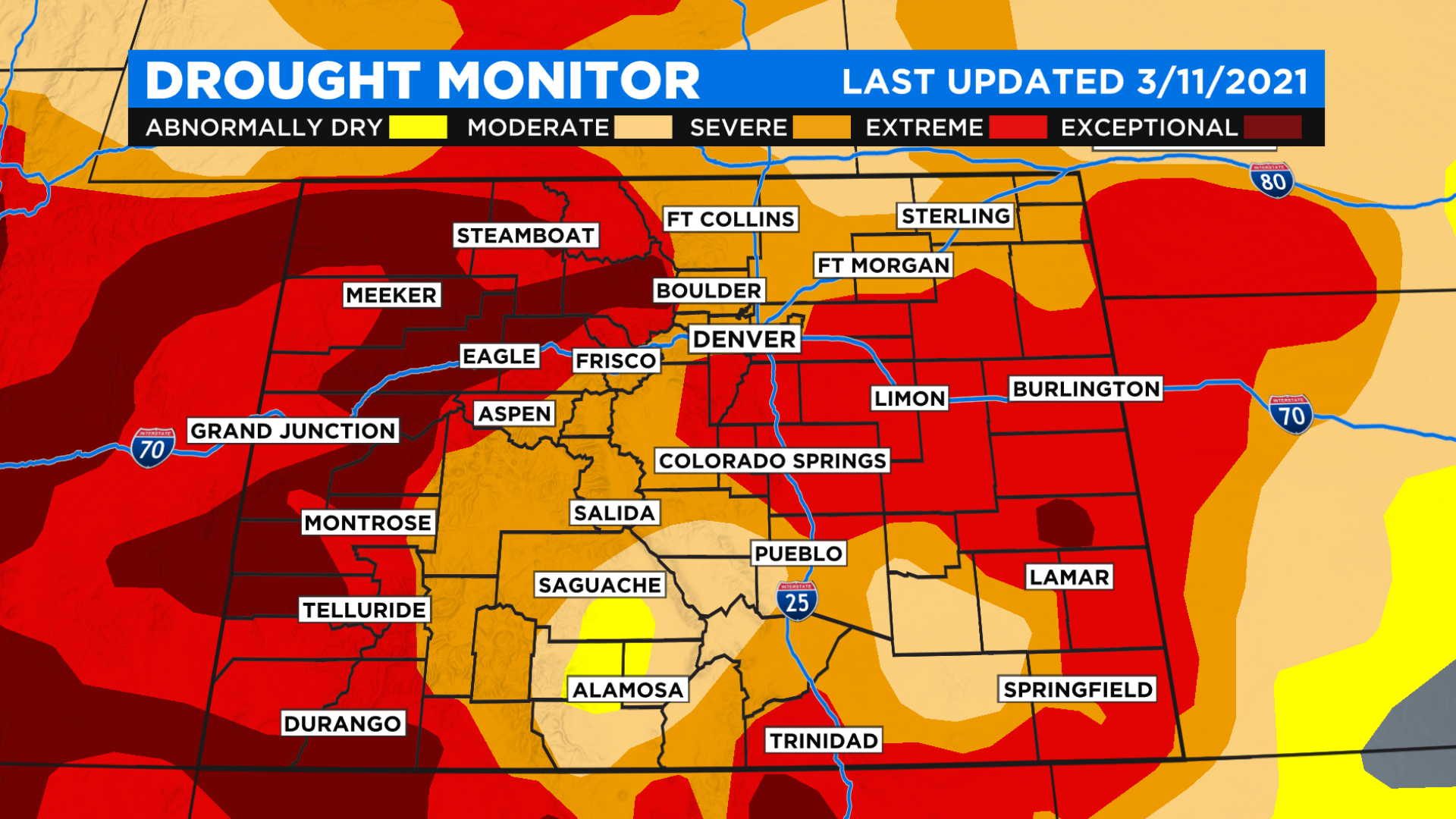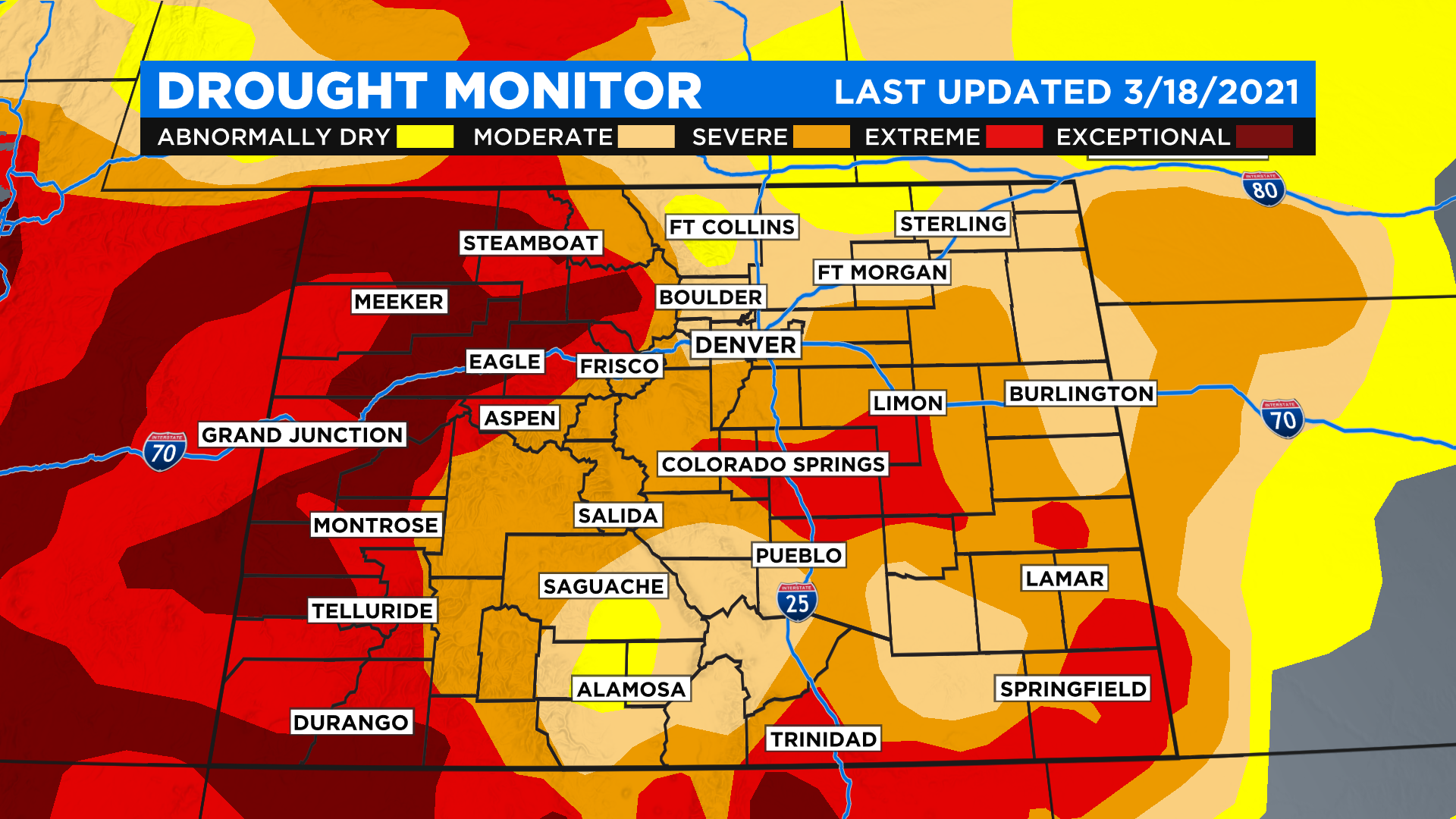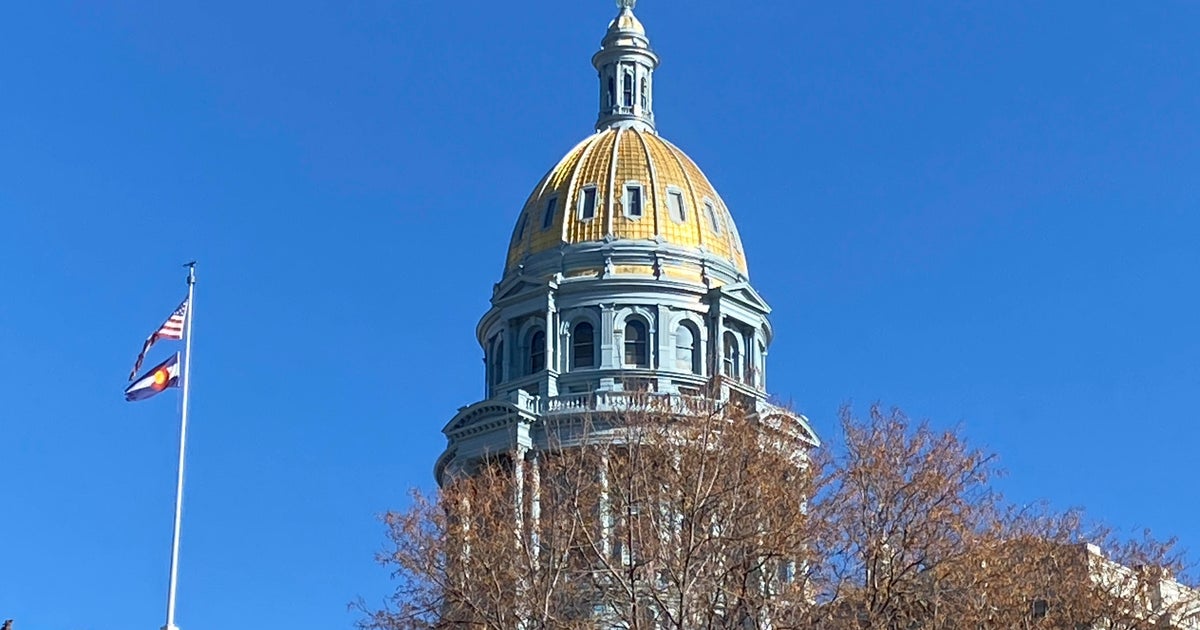Historic Repeat: Like 2003, March Blizzard Of 2021 Helps Ease Drought On Colorado's Front Range
DENVER (CBS4) - You've probably heard the saying at some point in your life that history often repeats itself. That saying definitely holds true for the Front Range of Colorado when it comes to widespread drought and blizzards in March. If you were living in Denver or along the Front Range in 2002 you know that it was the driest year on record in Colorado. Widespread drought developed, water supplies were low and the future looked bleak. Then the following March produced a historic blizzard that put a major dent in the drought and filled up many reservoirs.
Fast forward to this year and it's almost an exact repeat. 2020 came in as the second driest year on record in Colorado filled with wildfires, dwindling water supplies and a worsening drought. Then March arrived and it brought another historic blizzard to the Front Range. And while it was not quite as big as the one in 2003 it still made a significant dent in the drought.

The map above is from the U.S. Drought Monitor on March 11 and the map below just one week later on March 18. Locations around metro Denver and on the Eastern Plains improved by one or two categories.
In the foothills west of Fort Collins conditions are now considered to be 'abnormally dry' after the storm which means they are technically in drought recovery. Before the storm the area was listed as being in a severe drought.

While the news is good we can't get complacent because in Colorado things can change really fast. All it would take for conditions to rapidly decline would be a few weeks with unusually warm and dry weather. Luckily in the short-term it looks like more rain and snow will be possible starting this Sunday and lasting into the middle part of next week.





